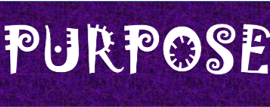
In the post The Dark Side of Charisma, we looked at a research study that showed the importance for leaders to have the right amount of charisma. Too much or too little created problems.
Seeking more insight about charisma
Wanting to better understand charisma, I searched TED.com for more perspectives. Two TED presentations addressed interesting elements on the topic. The first looks at whether or not charisma can be learned. The second considers the reaction of followers to charismatic leaders. I recommend that you check out these talks.
Can charisma be learned?
A version of my article on Linked In led to someone asking about whether or not charisma can be learned. I believe that charisma, like most leadership traits, can be learned. There are certain behaviors that make people more charismatic, and behaviors can be practiced. With that said, certain people are born with personality traits and physical traits that might give them a natural head start on being charismatic.
With this question in mind, I set out to find some answers…
John Antonakis: Let’s face it: Charisma Matters
John Antonakis spoke at TEDx Lausanne (16:04 minutes) in his presentation Let‘s face it: Charisma Matters. He started by demonstrating how people could predict winners of political contests based only on photographs. They only had the photograph – no additional information – but they still predicted the winner.
That finding deeply concerns me. It reflects an unconscious bias about what we think leaders should look like instead of focusing on the candidates’ platforms, ideas or competence.
Antonakis confirmed that people do make judgments on appearance. But he offered hope. We can change how we are perceived by learning some charisma tactics.
He described one study in which students gave two presentations – once before and once after learning these charisma tactics. Independent judges rated their two presentations and rated the ones after the charismatic training to be more effective.
A charismatic speech can work as well as money
Describing another study, Antonakis said that 106 temporary workers were hired to do mailings for a charity. They were randomly assigned to three groups. One group received no bonus opportunity and a standard orientation speech. The second group had a bonus opportunity and the standard speech. Although the third group had no bonus option, they heard a charismatic version of the speech filled with motivational stories. The second and third groups performed significantly better than the first group. The bonus motivated the second group. Interestingly, group three was just as motivated – without economic incentive – by the charismatic speech.
Charisma costs a lot less than bonuses.
Three tactics for improving charisma
Antonakis proposed three charisma tactics that can be learned.
- Charisma tactic 1: Framing – The first tactic requires framing of the topic through metaphors, stories, visuals, contrasts and rhetorical questions.
- Charisma tactic 2: Substance – The second tactic involves bringing moral conviction, confidence and a collective approach to the topic.
- Charisma tactic 3: Passion – The third tactic focuses on voice and body language to create a compelling message.
How do followers respond to charismatic leaders?
Another interesting element of charismatic leadership is how followers respond. In his TEDx UHasselt talk, Awestruck: Surprising facts about why we fall for charismatic leaders, Jochen Menges discussed the reaction of followers.
Menges’ interest in studying followers sparked from a speech he observed of Barack Obama. Although he expected the speech to energize people, he observed that attendees listened intently but quietly. They seemed more mesmerized than energized. Afterwards, attendees reported feeling amazed, moved and impacted by the charismatic speech. But their behavior in the moment did not show it.
Being awestruck
Menges coined this effect as being awestruck. The attendees felt intense and positive emotions. But they reacted by becoming almost shy and intimidated – in other words, awestruck.
Studying awestruck followers
Menges studied the phenomena of being awestruck. He invited a speaker to come give the same talk twice to two different groups. The words of the talk stayed the same, but the tone of one talk was standard and the tone of the other was charismatic. He wanted to see if attendees became awestruck and what the impact might be.
After the standard presentation, the attendees reported an average level of enjoyment and expected to recall some of the ideas. The attendees of the charismatic presentation rated the talk more highly and expected to remember most of the ideas.
Charisma can affect recall and critical thinking
Surprisingly, the more confident people from the charismatic speech actually remembered less. Reality, in the form of a recall test, showed that the charismatic speech group actually remembered less of the actual content of the presentation. They had a more positive reaction but actually learned less.
The intensity that causes the awestruck effect seems to make people remember less and be less capable of scrutinizing messages. Charismatic leaders can sometimes make groups excited and feel good, but also make them less discerning.
Both of these TED talks present fascinating topics backed by research. Check them out to get the full experience!



